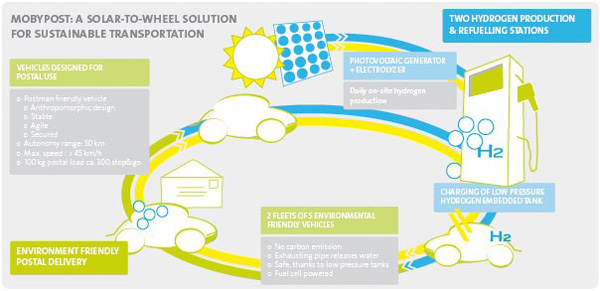November 2013
By Zhao Xu
China’s first “Special Economy Zone” was established in ShenZhen as a result of the policy of “reform and opening” in 1979. When visiting these zones in China today, it is highly likely that you will have the pleasure of a taxi ride in one of the over 1,000 electric taxi’s currently operating in ShenZhen. In fact, the municipal government of ShenZhen has an ambitious plan to replace all local petroleum-fueled taxies with pure electric ones over the next five years. Moreover, the plan calls for replacing half of the total 16,000 rapid-transit city buses with zero-or-low-direct emissions ones (electric-driven or hybrid) by the end of 2015. ShenZhen has become China’s National template for “low-carbon cities”, and leads the world in the largest electric-vehicle fleets for public transportation (nearly 1,000 eBuses, 1,000 eTaxis and over 500 ePolice vehicles) [1-4].
By Dr. Abdesslem Djerdir
The solar-to-wheel concept, an environment friendly solution for transport
MobyPost is a European project [1] including nine participants from four European countries, three of which are small and medium-sized enterprises. The project proposes to develop hybrid-electric vehicles powered by fuel cells for postal delivery applications as well as creating a local hydrogen production source and associated refueling station, all from a renewable primary energy source — the sun. For that purpose, photovoltaic generators installed on industrial buildings roofs will be used to produce hydrogen by electrolysis on site. The basic element of this environmentally friendly and cutting edge project is the development of ten Fuel Cell Electrical Vehicles (FCEVs). Tailor-made and designed for post-delivery use, they will be silent and only reject water produced during the conversion of hydrogen and oxygen into electricity by the embedded fuel cell. The hydrogen produced from solar energy fed exclusively to the vehicle fuel cells allows postal delivery with zero emissions of any pollutants (figure 1).
by Brewster McCracken, President and CEO, Pecan Street Research Institute
What if electric vehicle drivers don’t charge at the same time each afternoon after all?
That’s one of the tantalizing possibilities raised by the most recent data from the Pecan Street Research (PSR) Institute’s electric vehicle (EV) research trial.
The most recent data is for 30 homes during the June 1 – August 31, 2013 quarter. (PSR’s EV research trial consists of 74 EV drivers in Austin who own a mix of Leafs and Volts, along with two Tesla Model S owners). Half of the sample consists of EV owners participating in a time-of-use pricing trial. All participants have Level 2 home chargers, and their electricity use and charging are measured at one-minute intervals.
By James Gover
The federal government under both political parties has promoted the development of electric and hybrid vehicle technology.
In 1993, during the administration of President Bush, the Partnership for a New Generation of Vehicles (PNGV) was created as a cooperative research program between the U.S. government, U.S. government-owned laboratories and major auto corporations. Its goal was to bring 80 mpg vehicles to market in the U.S. by 2003. DaimlerChrysler, Ford and General Motors (GM) were the three U.S. auto companies participating in the PNGV; each created working concept vehicles of five-passenger family cars that achieved at least 72 mpg.
About the Newsletter
Editors-in-Chief

Jin-Woo Ahn
Co-Editor-in-Chief

Sheldon Williamson
Co-Editor-in-Chief
TEC Call for Articles 2023 - Advances in Charging Systems
The TEC eNewsletter is now being indexed by Google Scholar and peer-reviewed articles are being submitted to IEEE Xplore.
To submit an article click here.



